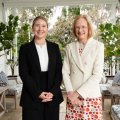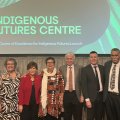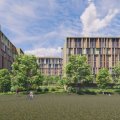Bone tissue engineering using biological paste that directs bone cell growth and development into new bone material is the latest biomedical innovation to emerge from The University of Queensland.
Associate Professor Victor Nurcombe and Dr Simon Cool from UQ`s Department of Anatomy and Developmental Biology in the School of Biomedical Sciences agree that this biotechnology has the potential to dramatically decrease the incidence of fractures that refuse to heal and the time taken for broken bones to repair.
Eventually it is hoped that such technology could be coupled with suitable biomaterials to decrease the need for lengthy physical bracing.
What the researchers have done is identify a sugar that directs stem cells to develop into new tissues - in this case, bone tissue, which will enhance the ability of the body to repair itself.
When bone stem cells are placed in contact with such biologically-active sugars and delivered to the damaged bone site, the stem cells mature and begin making new bone that eventually replaces the biodegradable scaffold that held it all in place.
"The sugar can be included in bone-bridging pastes to stimulate bone repair or regeneration, or it can be included in gels injected into fracture sites to activate cells and increase healing rates," Dr Cool and Dr Nurcombe said.
"Bone often weakens around the metal screws and plates which have conventionally been used to repair bone injuries. Bone tissue engineering is emerging as an exciting new technology to transform the use of such fixation devices.
"Our research thus provides an ability to reliably and accurately induce new bone formation which has huge implications for health care because it minimises patient morbidity. Such technology will dramatically reduce the need for revision surgery, the length of hospital stays and so reduce the costs to patients and the community. A win-win situation.”
Other applications of this orthobiologic technology include tooth repair, integration of prosthetic devices into bone, and even bioengineering to create bone in-vitro.
Dr Cool and Dr Nurcombe said the technology has the potential to further enhance Australia`s reputation in tissue engineering research and provide training at the interface of the rapidly advancing sciences of stem cell biology, biomaterials and nanotechnology.
This research team will be part of the recently announced Australian Institute of Bioengineering and Nanotechnology – an initiative of The University of Queensland, the Queensland Government and an overseas philanthropic organisation.
UniQuest Pty Limited, UQ`s main technology commercialisation company, has recently lodged a provisional patent application for this technology. UniQuest Managing Director David Henderson said commercial partners are now being sought.
"The due diligence undertaken as part of the process that lead to the lodging of the patent gave us strong grounds to believe that the bone tissue engineering technology is robust and well positioned to answer a market demand,” Mr Henderson said.
Media: for more information, contact Associate Professor Victor Nurcombe (tel. 07 3365 2661, email v.nurcombe@uq.edu.au) or Dr Simon Cool on (tel. 07 3365 4593, email s.cool@uq.edu.au) or Peter McCutcheon at UQ Communications (tel. 07 3365 1088)




